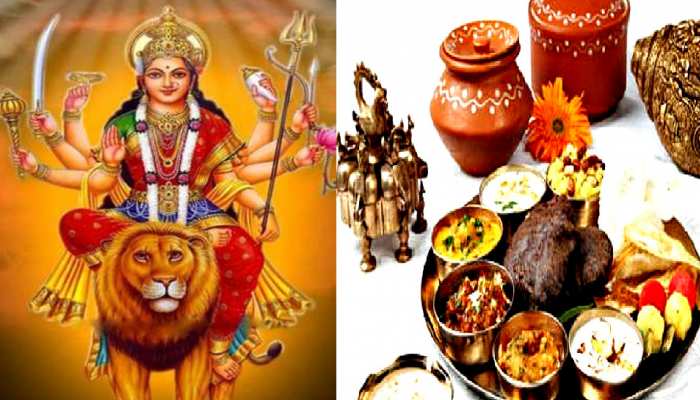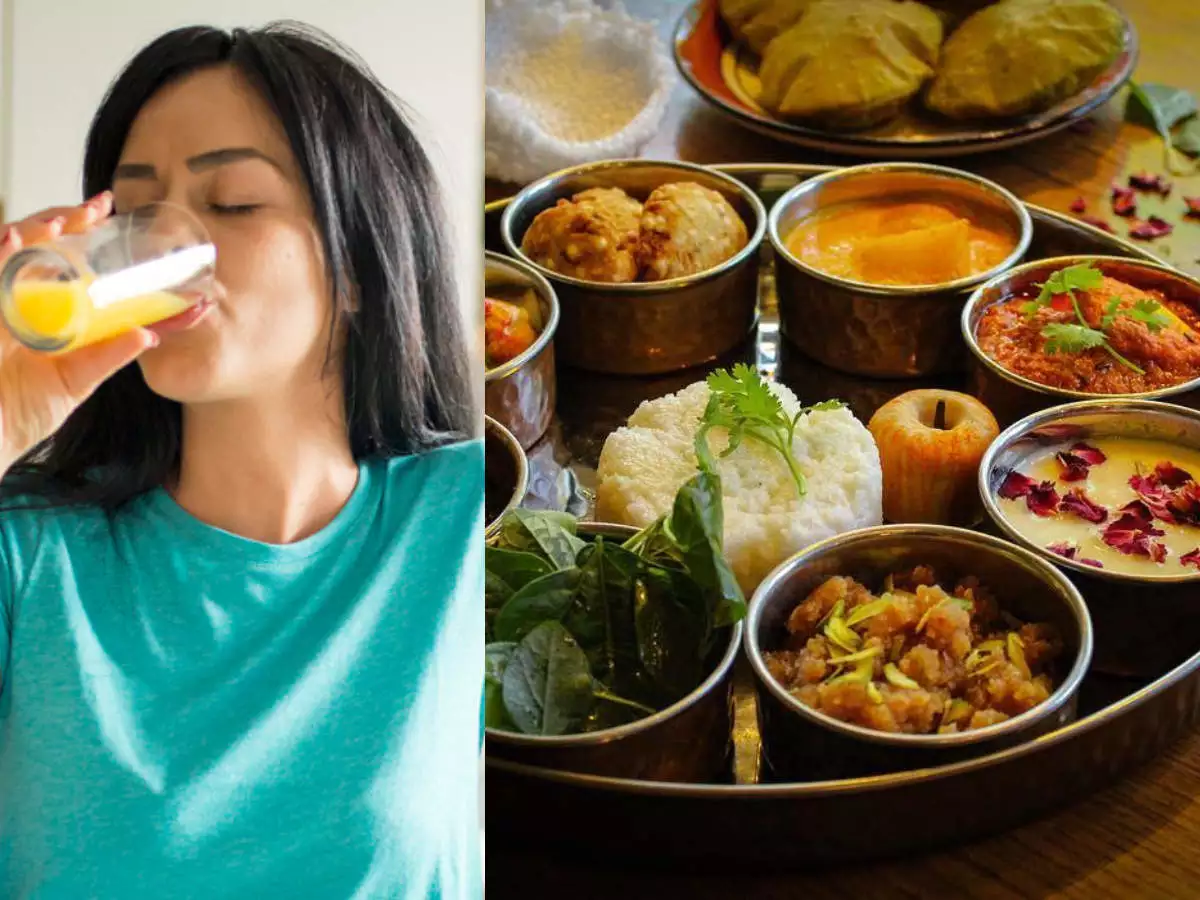What to Eat in Navratri Fast?
During Navratri fasting, there are certain food restrictions and guidelines that devotees follow. Here are some general rules on what to eat and what not to eat during Navratri fasts:
Flours and Grains
Regular grains like wheat and rice are not allowed during Navratri fasting. Instead, you can consume flours made from buckwheat (kuttu ka atta), water chestnut (singhare ka atta), or amaranth (rajgira ka atta).
Spices and Herbs
Normal table salt is replaced with rock salt or sendha namak during Navratri fasting. You can use spices like cumin, black pepper, green cardamom, cloves, cinnamon, ajwain (carom seeds), dry pomegranate seeds, kokum, tamarind, and nutmeg
Fruits
You can eat all types of fruits during Navratri fasting. Some devotees even choose to fast only on fruits and milk for all nine days.
Vegetables
Devotees can consume vegetables such as potatoes, sweet potatoes, arbi (colocasia), kachalu (yam), lemons, raw or semi-ripe pumpkin, spinach, tomatoes, bottle gourd, cucumber, and carrots during Navratri fasting
Please note that these are general guidelines, and specific fasting practices may vary among individuals and regions. It’s always advisable to consult with a knowledgeable person or priest for specific fasting rules based on personal beliefs and traditions.
When to Break Navratri Fast?
The duration of Navratri fasting is typically nine days, and the fast is broken on the tenth day, which is celebrated as Vijayadashami or Dussehra. The fast is usually broken after performing a special prayer or puja in honor of Goddess Durga.
However, there are some variations in the fasting rules and practices among different regions and communities. Some devotees may choose to break their fast on the eighth day (Ashtami) or the ninth day (Navami) of Navratri.
It’s always advisable to consult with a knowledgeable person or priest for specific fasting rules based on personal beliefs and traditions.

What are some popular Navratri recipes?
Sama Khichdi
A one-pot dish made with barnyard millet, vegetables, and Indian spices. It is gluten-free and vegan-friendly.
Sabudana Kheer
A delicious dessert made with tapioca pearls, milk, sugar, and dry fruits
Singhara Atta Cheela
A pancake made from water chestnut flour, spiced up with green chili, coriander, and Indian spices.
Navratri Ashtami Ka Prasad
A special combination of halwa, puri, and chana prepared on the eighth day of Navratri.
Rajgira Paratha
Flatbreads made with amaranth flour, often stuffed with mashed potatoes or paneer. They are a filling choice for Navratri meals.
These are just a few examples, and there are many more Navratri recipes available online. You can explore websites like Archana’s Kitchen, Cook With Kushi, and Spice Up The Curry for more recipe ideas
Kuttu Ki Puri
Deep-fried bread made with buckwheat flour. It’s a common and tasty Navratri snack.
Aloo Jeera
A simple yet flavorful dish made with boiled potatoes sautéed with cumin seeds and spices. It’s a staple during Navratri fasting.
Lauki Ki Sabzi
A curry made with bottle gourd cooked in a tomato-based gravy with spices. It’s a nutritious option for Navratri meals.
Shakarkandi Chaat
Sweet potato chaat seasoned with spices, lemon juice, and fresh coriander. It’s a popular fasting snack.
Makhana Kheer
A creamy dessert made with roasted foxnuts (makhana), milk, and sugar. It’s a delicious and nutritious sweet option.
How do people fast during Navratri?
Fasting Duration: Navratri fasts typically last for nine days, but some devotees may choose to fast only on the first two or the last two days of the festival.
Food Restrictions: Regular grains like wheat and rice are not consumed during Navratri fasting. Instead, people eat flours made from buckwheat, water chestnut, or amaranth. Other commonly consumed foods include barnyard millet, sabudana (tapioca pearls), fruits, and milk.
Spices and Herbs: Normal table salt is replaced with rock salt or sendha namak during Navratri fasting. Spices like cumin, black pepper, green cardamom, cloves, cinnamon, ajwain (carom seeds), dry pomegranate seeds, kokum, tamarind, and nutmeg are commonly used.
Vegetables: Devotees can consume vegetables such as potatoes, sweet potatoes, arbi (colocasia), kachalu (yam), lemons, raw or semi-ripe pumpkin, spinach, tomatoes, bottle gourd, cucumber, and carrots during Navratri fasting.
Other Practices: In addition to dietary restrictions, devotees may also follow other practices such as waking up early, taking a holy bath, practicing celibacy, abstaining from consuming alcoholic beverages or tobacco, and refraining from activities like clipping nails or getting haircuts during the fasting period.


1 thought on “Energize Your Navratri Fast with These Must-Try Food Choices”